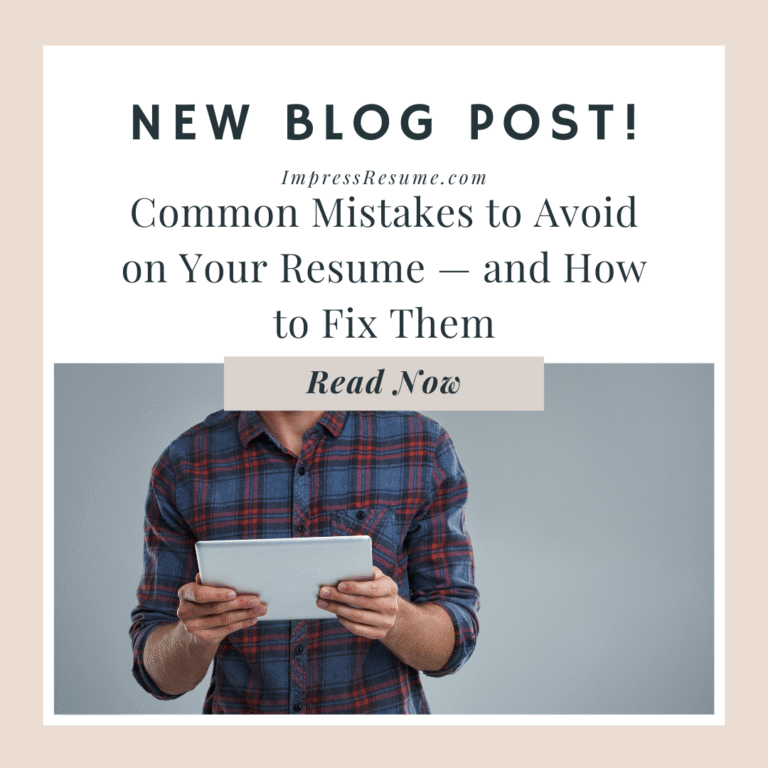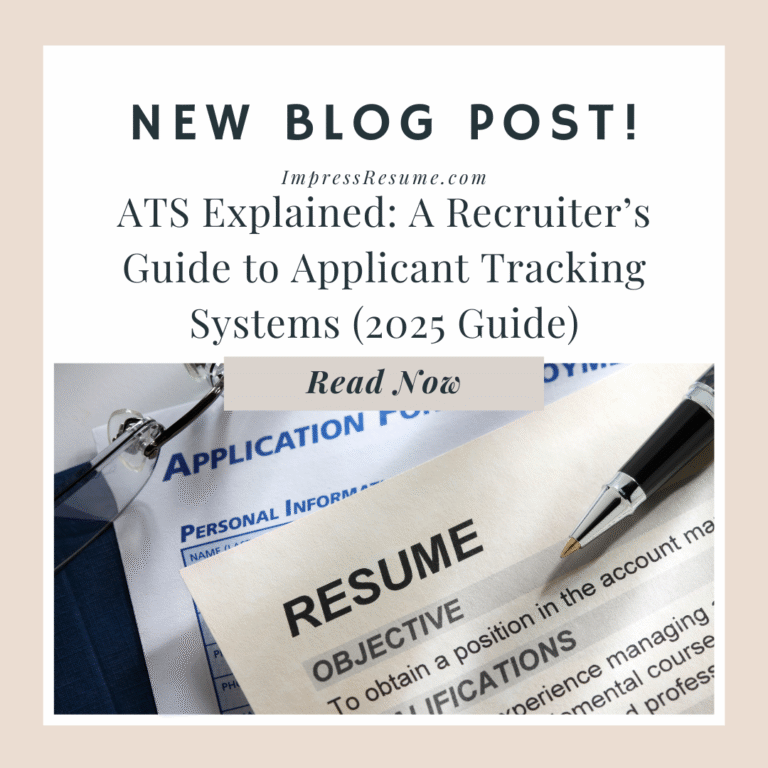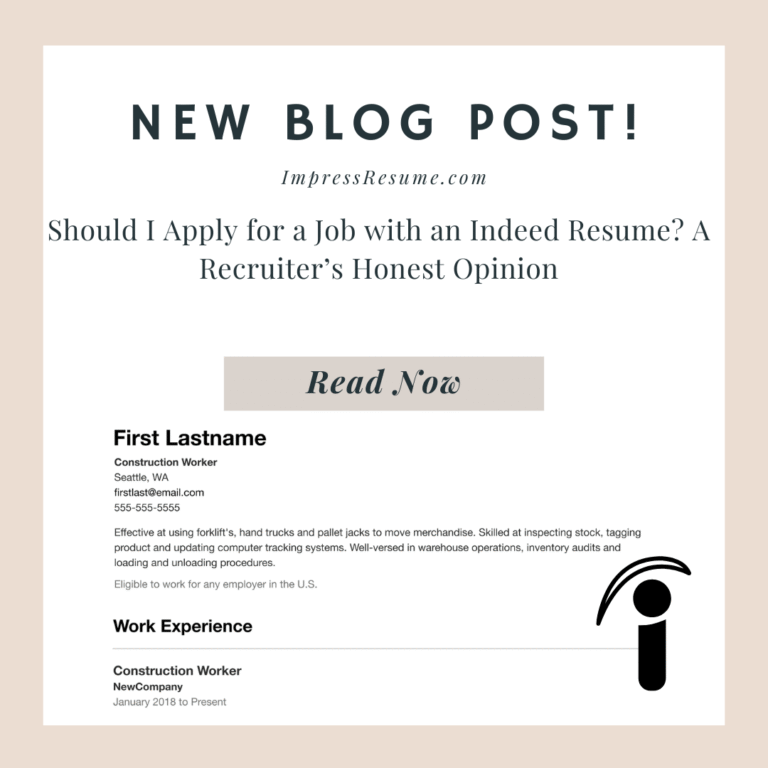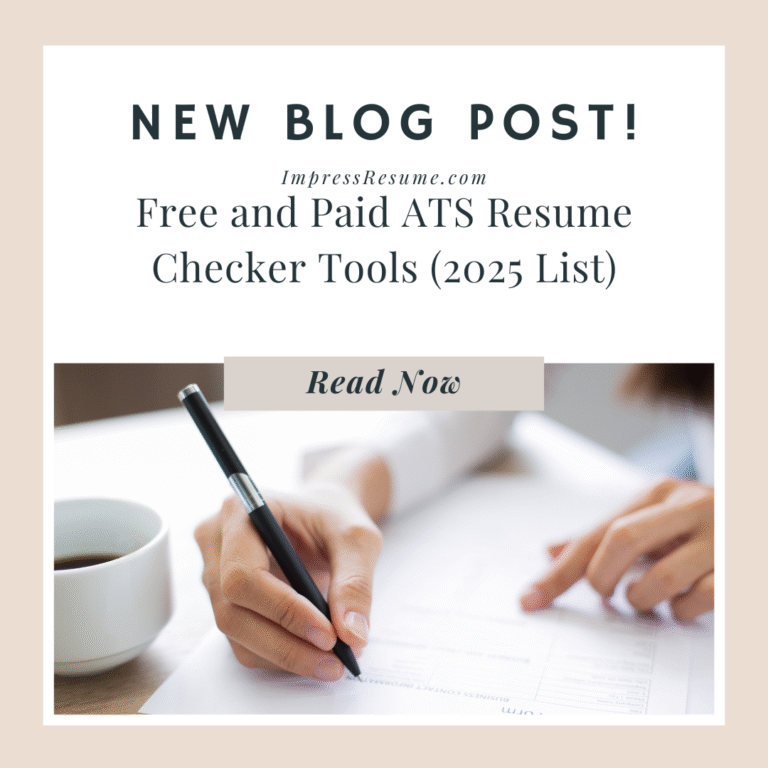7 Reasons Why Recruiters Ghost Candidates (And What You Can Do About It)
Let’s face it—being ghosted during the job search sucks. You send in your resume, maybe even have a solid phone interview, and then… nothing. No email. No feedback. Just crickets. If you’ve been left wondering what went wrong, you’re not alone. Ghosting has, unfortunately, become a common (and frustrating) part of the job-hunting experience.
As a staffing recruiter, I’ve seen both sides of this situation—and I’m here to shed some light on why it happens and how you can improve your chances of staying on a recruiter’s radar.
1. Your Resume Didn’t Get Past the ATS
Most recruiters use an ATS (Applicant Tracking System) to screen resumes. If your formatting is off or you’re missing keywords, your resume might never even reach human eyes. It’s not personal—it’s tech. An un-optimized resume is one of the top reasons candidates are overlooked.
✅ Fix it: Use an ATS-friendly resume. At ImpressResume.com/shop, you can grab recruiter-designed resume bundles that are optimized for ATS—and they’re budget-friendly, too.
2. You Didn’t Match the Job Requirements Closely Enough
Sometimes the role requires very specific skills or experiences, and if you’re just slightly off, you may get passed over without explanation. Recruiters often receive hundreds of applications and only follow up with top matches.
✅ Fix it: Carefully read the job description and tailor your resume to match. If you don’t meet 80-90% of the qualifications, it might not be the right fit.
3. The Role Was Put on Hold or Canceled
Not every job posting ends in a hire. Sometimes companies pause hiring, lose funding, or shift priorities. Unfortunately, many recruiters don’t circle back with every applicant when plans change.
✅ Fix it: Don’t take it personally. Follow up once, then move on and keep applying elsewhere. Timing and luck often play a bigger role than we’d like to admit.
4. The Recruiter Got Busy (or Dropped the Ball)
Recruiters juggle a lot—multiple roles, dozens of candidates, hiring managers, and admin tasks. Sometimes, ghosting is simply due to human error or workload overload.
✅ Fix it: Stay politely persistent. A follow-up email after 5-7 days is totally acceptable. Keep it brief and professional.
5. You Didn’t Follow Instructions
If the job posting says “attach a PDF resume” or “include a portfolio link” and you skip it, that can be a red flag. Failing to follow basic directions often results in silent rejection.
✅ Fix it: Always follow application instructions to the letter—it shows attention to detail and professionalism.
6. Your Online Presence Raised Concerns
Yes, recruiters do check social media. If your online presence is questionable (think: inappropriate posts, negative rants, or outdated LinkedIn profiles), it could raise eyebrows.
✅ Fix it: Google yourself. Make sure your LinkedIn is up to date and your public social profiles are clean and reflective of how you want to be seen professionally.
7. You Were Great—But Someone Else Was a Better Fit
This one stings, but it’s common. You could be a solid candidate, but another applicant checked every box and had that extra “something.” It’s not always about you lacking—sometimes it’s just someone else standing out more.
✅ Fix it: Keep improving. Ask for feedback when possible, refine your resume, and don’t let rejection shake your confidence. The right role will come along.
Final Thoughts from a Staffing Recruiter
Ghosting isn’t fair, and it isn’t professional—but it happens. I know how discouraging it feels to be left in the dark. That’s why I created ImpressResume.com: to help job seekers like you create resumes that get seen and get results. Our ATS-friendly resume bundles are recruiter-tested, easy to edit, and cost less than a cup of coffee.
The job market can be tough—but with the right tools, a strong resume, and a little persistence, you can stand out.
Keep going. You’ve got this.







